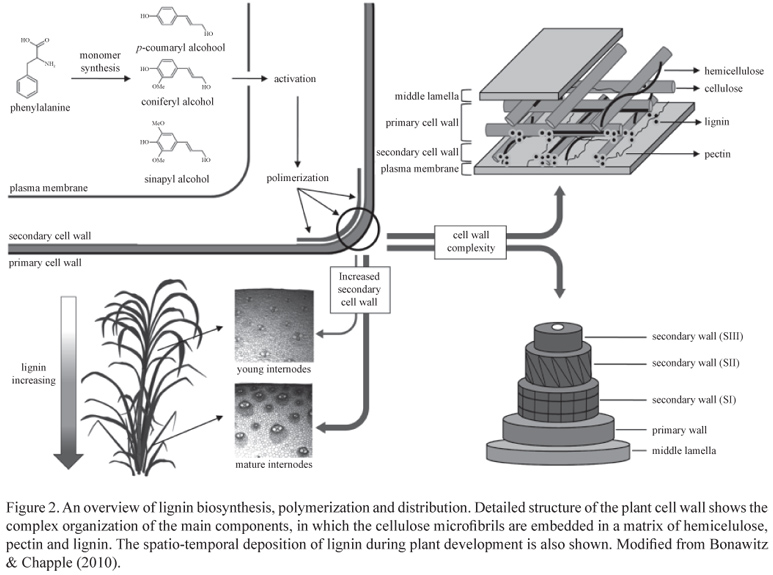Lignin, after cellulose, is the second most abundant biopolymer on Earth, accounting for 30% of the organic carbon in the biosphere. It is considered an important evolutionary adaptation of plants during their transition from the aquatic environment to land, since it bestowed the early tracheophytes with physical support to stand upright and enabled long-distance transport of water and solutes by waterproofing the vascular tissue. Although essential for plant growth and development, lignin is the major plant cell wall component responsible for biomass recalcitrance to industrial processing. The fact that lignin is a non-linear aromatic polymer built with chemically diverse and poorly reactive linkages and a variety of monomer units precludes the ability of any single enzyme to properly recognize and degrade it. Consequently, the use of lignocellulosic feedstock as a renewable and sustainable resource for the production of biofuels and bio-based materials will depend on the identification and characterization of the factors that determine plant biomass recalcitrance, especially the highly complex phenolic polymer lignin. Here, we summarize the current knowledge regarding lignin metabolism in plants, its effect on biomass recalcitrance and the emergent strategies to modify biomass recalcitrance through metabolic engineering of the lignin pathway. In addition, the potential use of sugarcane as a second-generation biofuel crop and the advances in lignin-related studies in sugarcane are discussed.
biopolymer; genetic engineering; phenylpropanoids; wall components


